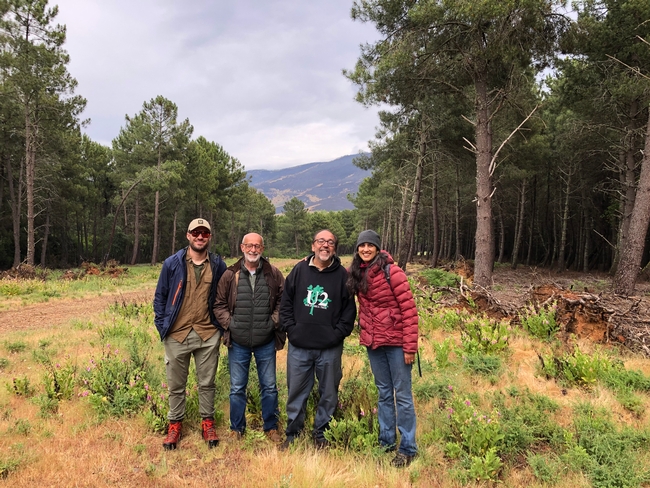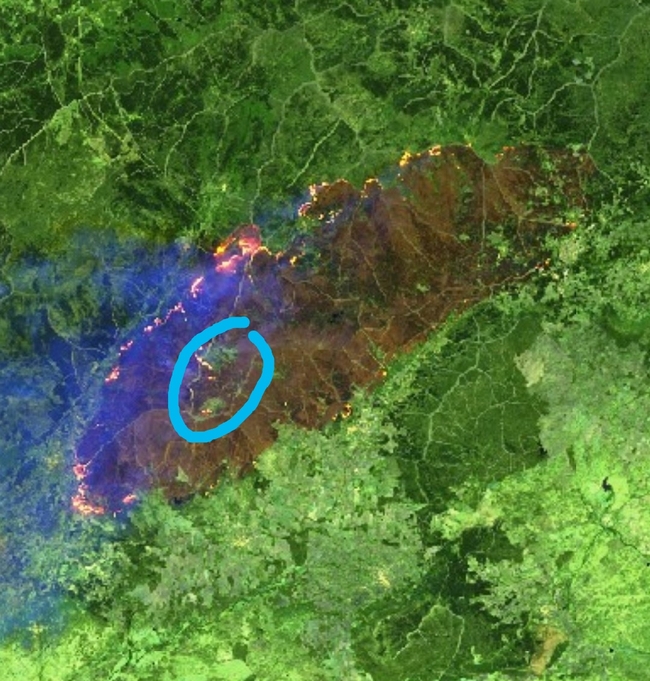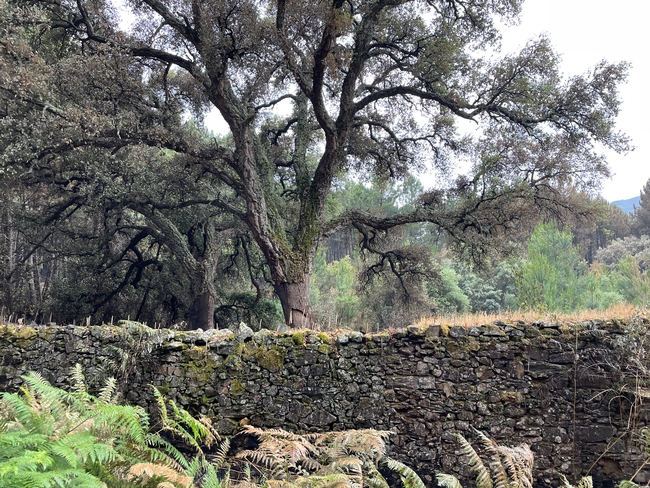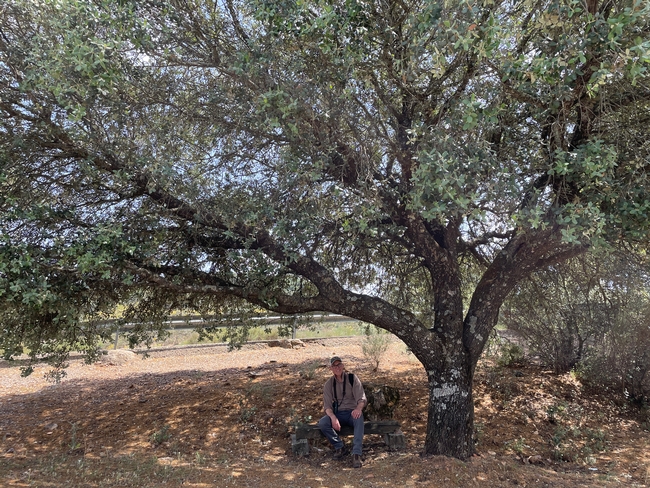On May 22, 2023 I had the opportunity to spend the day with Fernando Pulido, professor of ecology and land management at the University of Extremadura, in Plasencia, Spain. He is also the director of Proyecto Mosaico (Mosaic Project).
Mosaic Project
The Mosaic Project was started in 2015 in response to large-scale wildfires that had been burning through the Extremadura region of Spain. The goal of the project is to minimize the impacts of wildfires by developing “productive fuel breaks.” Productive fuel breaks are strips of land with lower levels of vegetative biomass, strategically placed in the forest. They are “productive” because they are grazed, or cultivated with crops that have lower canopy and more open spacing than the maritime pine trees (Pinus pinaster) that are dominant in the forest.
Some fuel breaks are maintained by goats and sheep. The Mosaic Project has a program, funded by the regional government, to pay goat and sheep producers to maintain and keep watch of the fuel breaks. Goats and sheep not only maintain the fuel breaks, but also produce meat and dairy products. Crops grown in these fuel breaks include olives, chestnuts, fruit trees, and vines. The Mosaic Project is introducing new crops with high commercial value and the ability to generate employment. They also support commercialization of products produced in the productive fuel breaks. The idea is that these ranchers and farmers can make a living off of using these fuel breaks for agriculture, so there is incentive to maintain them over time. In order to participate in the Mosaic Project, agricultural producers have to be part of local associations to work collaboratively among themselves and project leaders.
Sierra de Gata
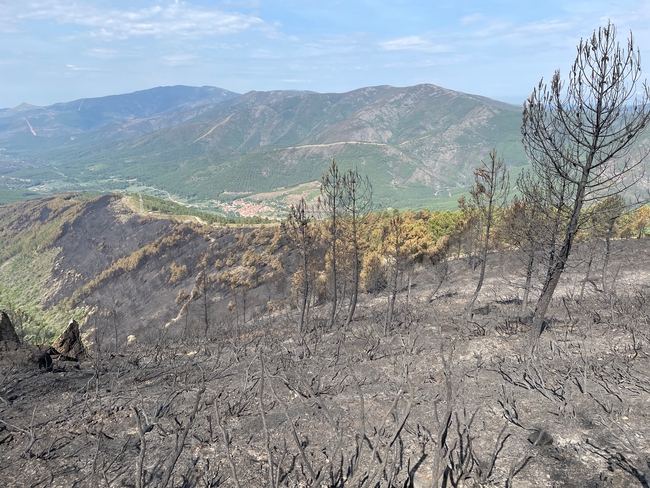
The Mosaic Project covers the Sierra de Gata and Las Hurdes, two adjacent mountain ranges. Both are dominated by pine trees and have small-scale human population centers dotted throughout them. The week before I arrived in Spain a nearly 30,000 acre wildfire burned through the Mosaic Project's study area in Sierra de Gata. The day I was there, we visited the burn area, including an area grazed by goats that was impacted much less by the fire.
The goat grazed area had also burned in a wildfire two years ago. The blackened shrub stems you see in the photos below are from the previous burn. After that fire, they began grazing goats.The goat grazing has kept the vegetation low and limited the effects of the fire.
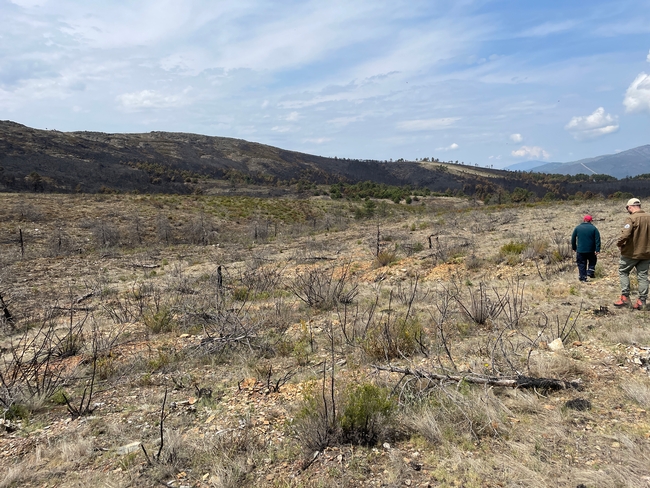
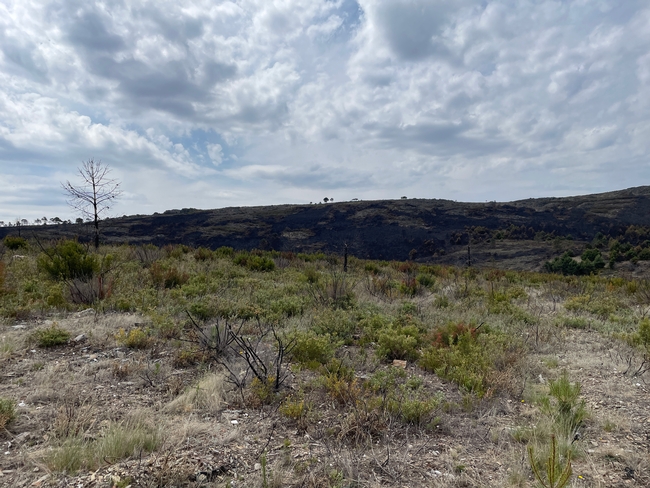
Abandoned Agricultural Lands
In addition to working in forests, the Mosaic Project is working in agricultural lands in the Sierra de Gata and Las Hurdes that are being abandoned. Many young people are moving to cities to make more money, leaving older farmers as the sole stewards of these lands. As they retire, many lands previously cultivated are converting to forests and have a much higher fire risk.
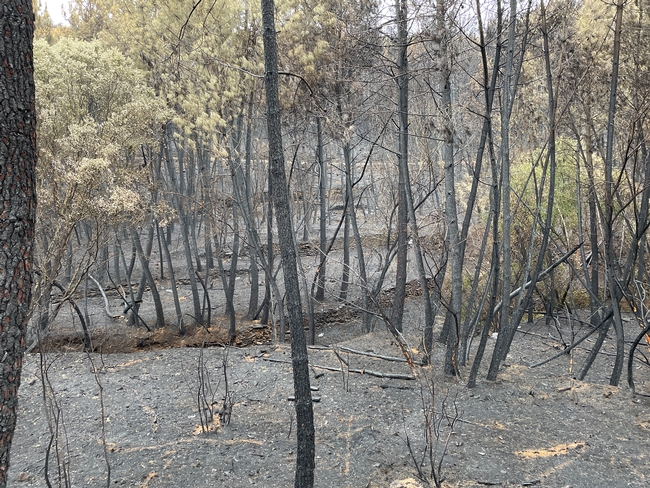
The Mosaic Project is working to revive agriculture on these abandoned lands. Some of the activities on these lands include harvesting resin from pine trees to make things like eye glass frames; producing cork from cork oak trees; livestock grazing; and cultivating pistachios, almonds, and cherries.
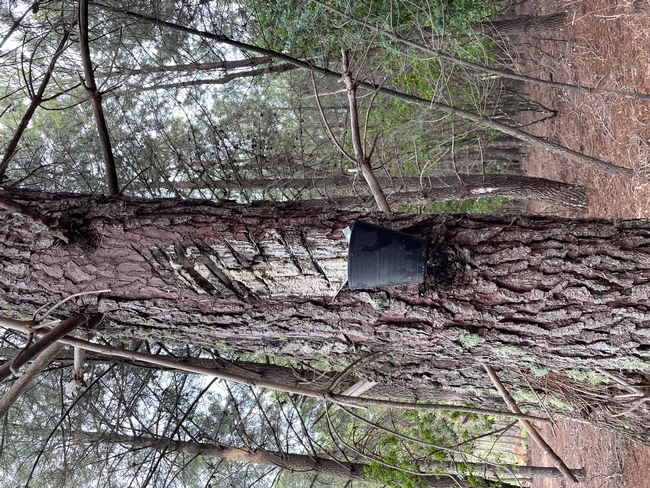
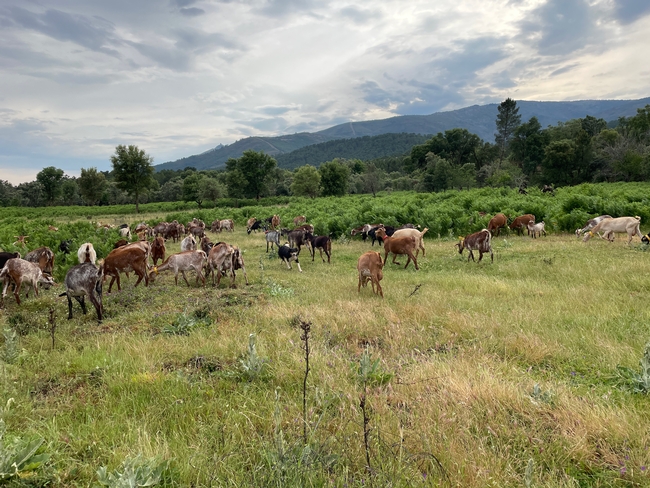
The Dehesa
Fernando Pulido, leader of the Mosaic Project, was born and raised in the dehesa. The dehesa is an oak savanna ecosystem in Spain and Portugal where agroforestry is practiced. Cattle graze on the grass. The main trees are cork oaks and holm oaks. Cork oaks are a renewable resource where cork is harvested every 9-10 years. Holm oaks offer shade for cattle and each holm oak tree is pruned by the land manager to retain it's typical low and wide canopy. Pruned tree limbs are sold for firewood. Acorns of the holm oak are eaten by pigs and give a specific flavor to the famous jamon iberico. Unlike California oaks, holm oak acorns are considered “sweet,” meaning that they don't have the level of tannins that our oaks have and they are not toxic animals. Holm oaks also facilitate the growth of truffles, providing another source of income to the ranchers. The dehesa is also home to a variety of wildlife species, including special-status species such as the Iberian lynx. The dehesa has been managed this way, for grazing and a variety of tree products, for centuries. Fernando got the idea for the Mosaic Project from his experience with management of these open dehesas.
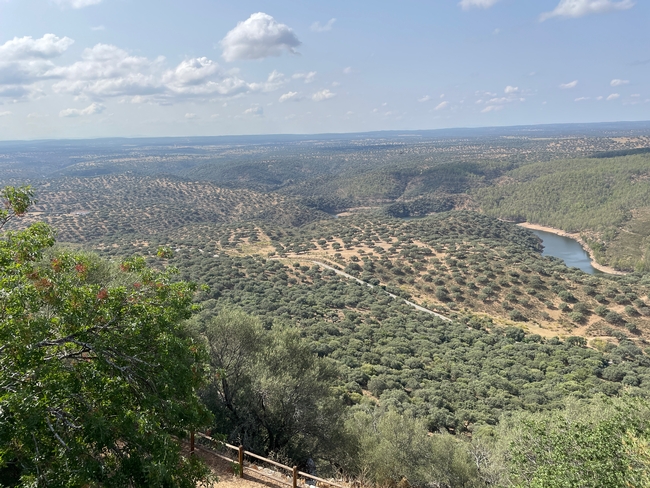
Potential for Future Collaboration
Issues related to wildfire are similar in Spain and California. In the future, I hope to be able to collaborate with Fernando on the Mosaic Project and see how those concepts could apply in California.
Author - San Benito County Director and Area Livestock and Natural Resources Advisor
